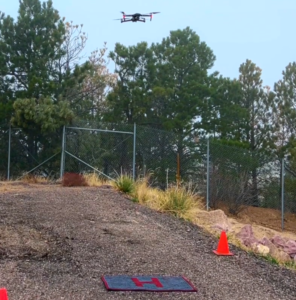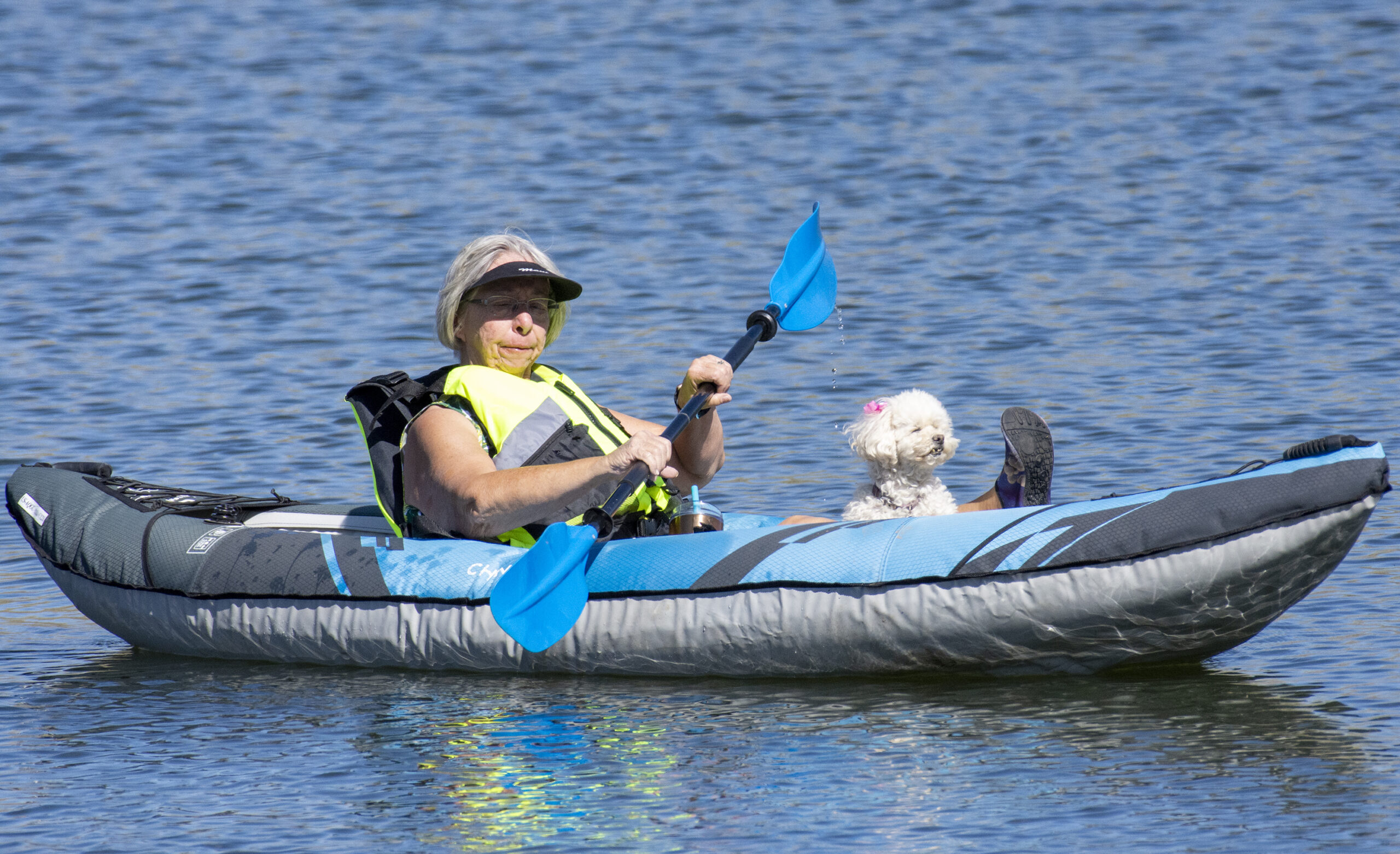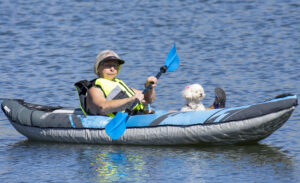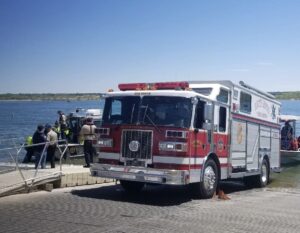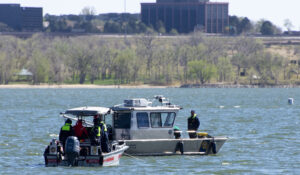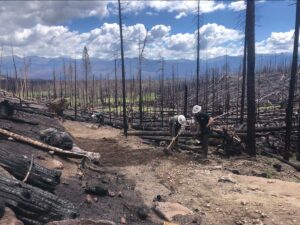
CPW and CYCA share a goal – to inspire people to connect with the outdoors while learning how to balance outdoor recreation with mindful conservation.
DENVER – Colorado Parks and Wildlife is partnering with the Colorado Youth Corps Association (CYCA) to hire 41 weeks of service corps this summer to repair off-highway vehicle (OHV) trails impacted by increased visitation and wildfire damage.
Colorado’s outdoors continue to see an increased demand for outdoor recreation and wildfires that pose challenges to Colorado’s trail network. Increased trail use can lead to more rapid trail erosion and heavily burned wildfire areas can shift the connectivity of some trails due to postburn hot spots in forest areas.
“As we monitor how human use and natural disasters impact our outdoor spaces, we are dedicated to protecting our trails so they can be enjoyed for years to come,” said CPW’s State Trails Program Manager Fletcher Jacobs. “CPW is fortunate to partner with so many wonderful organizations that share our passion to connect people to Colorado’s outdoors through educational experiences. We value our collaboration with CYCA because it allows us to work with our local outdoor communities at a grassroots level, and get our hands dirty together to rebuild recreational areas that bring people joy.”
CPW and CYCA share an organizational goal – to inspire young people to connect with the outdoors while learning how to balance outdoor recreation with mindful conservation. This partnership demonstrates the commitment of both entities to work together towards a mutually beneficial stewardship strategy.
While Colorado’s OHV recreators already play a critical role in sustaining motorized trails for the state by annually funding over $5 million in trail improvements, these projects give interested youth and young adults the opportunity to contribute to trail maintenance in a tangible way.
“Spending time in nature helps teach us, inspires us and nourishes our bodies and minds,” said CYCA’s Executive Director Scott Segerstrom. “Working together with CPW on these trail projects is a wonderful way to empower our corps members and demonstrate that they can make a significant difference to help conserve our public lands. Through experiential learning, our corps members are gaining knowledge on how they can transform landscapes and give back to their community.”
CPW staff and CYCA-accredited conservation service corps will be working on the following motorized trail maintenance projects this year:
Grand Lake-Williams Fork Fire Rehab
Rehabilitation and reconstruction of Williams Fork/Keyser Creek and Grand Lake Trail Systems, including signage, kiosks, resource protection fencing, trail structures and routes. The estimated quantity of open OHV trails and roads affected by wildfire in the two areas is over 200 miles and includes more than 32 trail bridges.
Rainbow Trail Maintenance
The primary purpose will be to reroute seven miles of this multi-use single-track trail. This section of the Rainbow Trail has been closed since 2016, so work will be done to restore the trail’s continuity and access to public lands. The secondary purpose of this project is to mitigate safety threats created by trail damage and hazard trees, particularly in the Hayden Pass burn area.
Killpecker/Swampcreek 2022 Trail Project
Post Cameron Peak Fire, Canyon Lakes RD plans to reopen motorized use to both trails as soon as possible. The Swampcreek Trail needs a saw crew to remove dead and down trees after the Cameron Peak Fire and remove any potential tree hazards. The Killpecker Trail needs a specialty crew to install size-restricted “V-Gates” on trail access points to limit unauthorized users onto single-track trails.
Red Mountain Gulch Day Use Area
This popular site along the Alpine Loop is almost predominantly used by OHV enthusiasts. Work to be completed by a hybrid crew includes wildfire mitigation work, piling of small aspen growth and brush for pick-up by Hinsdale County Road & Bridge Department for relocation to debris pile, reduction of overgrowth, painting of vault toilet and picnic tables and pavilion, installation of new signs, reinstallation of parking beams, reestablishment of picnic sites and trail work.
OHV Trail Maintenance on CPRD
The Forest Service Recreation crew will survey the trails to be maintained, and work alongside the Youth Crew. The goal of the project is to take care of deferred maintenance that accumulates on 56 miles of single-track trails. The work will include trail clearing (tree removal), drainage and tread work, corridor cleaning and trailhead improvement.
Penrose Commons Trail Maintenance
The work will improve the condition of the routes and add approximately 1,000 feet of fencing in key locations where trail widening is occurring to encourage riders to stay on the trail. Maintenance would be completed on multiple segments along the trail system, consisting of backslope issues, fixing trail grade, repairing drains, removing debris and trimming trail corridors.
Basalt to Gypsum Youth Corp Grant
The Basalt to Gypsum trail system is growing in popularity. The incised tread is no longer supporting the heavier impact. Providing proper drainage on the trails would help bring this motorized system closer to being sustainable. The trails need backlogged maintenance focusing on clearing and constructing drainage structures, tread work, corridor clearing, maintenance and sight clearing.
In addition to these seven trail maintenance projects, CPW has reallocated six weeks of crew funding to complete the Alpine Loop project that was awarded last year but not completed.
Alpine Loop Backcountry Byway
The Bureau of Land Management (BLM) will install signage and metal fire rings at approximately 200 dispersed campsites along the Alpine Loop. All campsites are accessible by motorized vehicles and OHVs. Crews will have two main tasks: to remove all rock fire rings in the project area and install the new fire rings and site posts within designated sites. In some cases, BLM will work with crews to limit and contain vehicle impacts with placement of worm fences and log barriers.
For more information on CPW’s Trails Program, visit https://cpw.state.co.us/.





